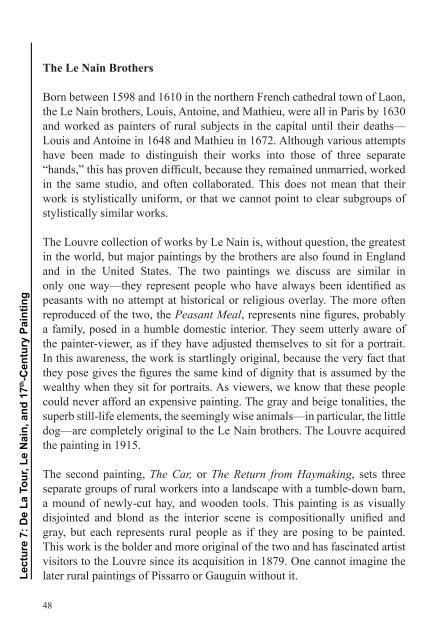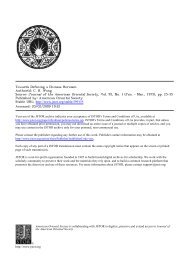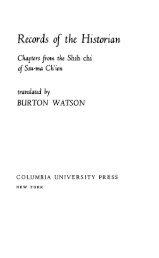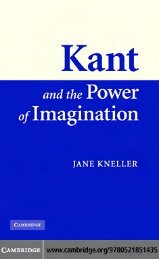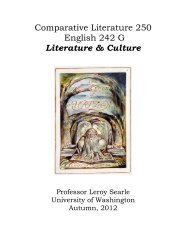You also want an ePaper? Increase the reach of your titles
YUMPU automatically turns print PDFs into web optimized ePapers that Google loves.
Lecture 7: De La Tour, Le Nain, and 17 th -Century Painting<br />
<strong>The</strong> Le Nain Brothers<br />
Born between 1598 and 1610 in the northern French cathedral town of Laon,<br />
the Le Nain brothers, Louis, Antoine, and Mathieu, were all in Paris by 1630<br />
and worked as painters of rural subjects in the capital until their deaths—<br />
Louis and Antoine in 1648 and Mathieu in 1672. Although various attempts<br />
have been made to distinguish their works into those of three separate<br />
“hands,” this has proven dif� cult, because they remained unmarried, worked<br />
in the same studio, and often collaborated. This does not mean that their<br />
work is stylistically uniform, or that we cannot point to clear subgroups of<br />
stylistically similar works.<br />
<strong>The</strong> <strong>Louvre</strong> collection of works by Le Nain is, without question, the greatest<br />
in the world, but major paintings by the brothers are also found in England<br />
and in the United States. <strong>The</strong> two paintings we discuss are similar in<br />
only one way—they represent people who have always been identi� ed as<br />
peasants with no attempt at historical or religious overlay. <strong>The</strong> more often<br />
reproduced of the two, the Peasant Meal, represents nine � gures, probably<br />
a family, posed in a humble domestic interior. <strong>The</strong>y seem utterly aware of<br />
the painter-viewer, as if they have adjusted themselves to sit for a portrait.<br />
In this awareness, the work is startlingly original, because the very fact that<br />
they pose gives the � gures the same kind of dignity that is assumed by the<br />
wealthy when they sit for portraits. As viewers, we know that these people<br />
could never afford an expensive painting. <strong>The</strong> gray and beige tonalities, the<br />
superb still-life elements, the seemingly wise animals—in particular, the little<br />
dog—are completely original to the Le Nain brothers. <strong>The</strong> <strong>Louvre</strong> acquired<br />
the painting in 1915.<br />
<strong>The</strong> second painting, <strong>The</strong> Car, or <strong>The</strong> Return from Haymaking, sets three<br />
separate groups of rural workers into a landscape with a tumble-down barn,<br />
a mound of newly-cut hay, and wooden tools. This painting is as visually<br />
disjointed and blond as the interior scene is compositionally uni� ed and<br />
gray, but each represents rural people as if they are posing to be painted.<br />
This work is the bolder and more original of the two and has fascinated artist<br />
visitors to the <strong>Louvre</strong> since its acquisition in 1879. One cannot imagine the<br />
later rural paintings of Pissarro or Gauguin without it.<br />
48


